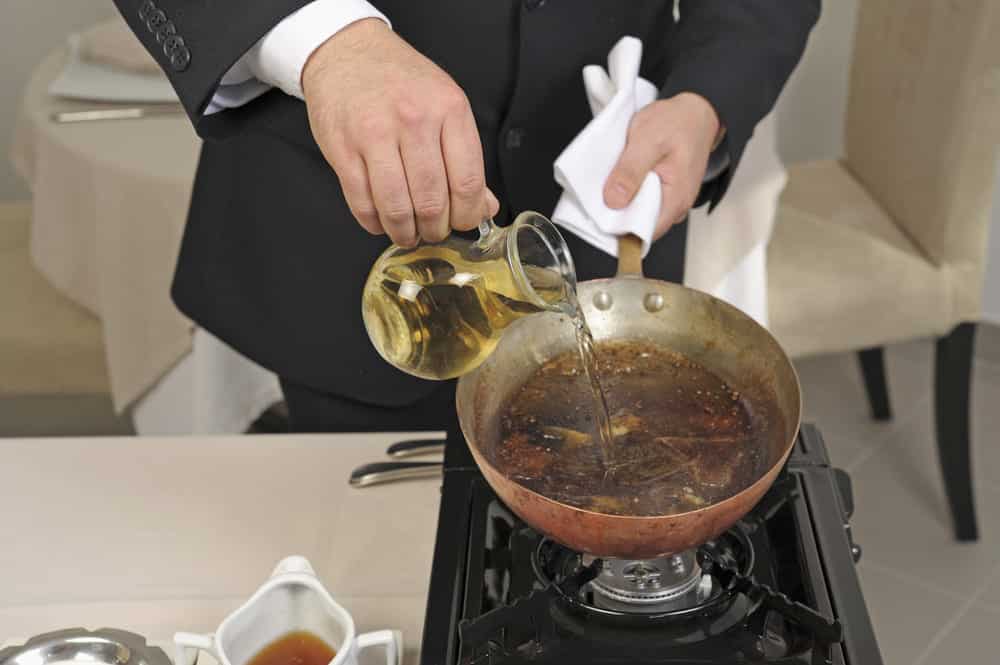
Deglazing is one of the most popular and versatile techniques when cooking with balsamic is concerned. To be honest, deglazing sounds like a complicated and fancy technique but it’s actually pretty easy and quick. There are different liquids used for deglazing and people actually consider if they can deglaze with vinegar. In case you want to know more, let’s read through this article!
Deglaze With Vinegar
When it comes down to deglazing, it’s the simplest process for adding liquid to the hot pan which loosens up the browned parts of caramelized food. It loosens up the browned bits that are stuck to the bottom. Keep in mind that caramelized food can add an extra punch to flavor to your meals and you won’t have to lose out on the flavor.
Deglazing actually ensures that the food is enriched with flavors and different liquids are used, such as wine and vinegar. That being said, it’s safe to say that vinegar can be used for deglazing. For the most part, people can use balsamic vinegar and heating the pans. The vinegar will sizzle on the veggies or meat; whatever you are cooking.
When the vinegar is added to the pan, you can scape the browned bits and stir them up for caramelizing the food. In case you are wondering about the flavors, deglazing adds the caramelized flavor to your meals. Moreover, the culinary experts suggest that the more the deglazing is, the better the taste will be. In addition, the pans can be deglazed if you cooked veggies, meat, and fish in it.
In case you are wondering about the advantages of deglazing. So, first of all, deglazing is better if you want to enrich the sauces with flavors. Not to forget, deglazing will make cleaning extremely easy. In the section below, we are sharing some instructions for deglazing;
- First of all, take out cooked food from the pan and remove if there is any gravy or liquid
- Secondly, you must remove anything that’s burned on the pan because burnt parts won’t taste good in sauces
- Then, put the pan back on the stovetop or heat and add the liquids. When it comes down to liquids, you can use vinegar but some people also use juice, stock, and wine (we suggest that you take off the pan from the heat if you are using alcohol to prevent flames)
- Now, add a few tablespoons of vinegar in the pan to ensure the entire pan is covered
- When the vinegar is heated up, use the spatula or a wooden spoon for scraping the pan’s bottom and keep doing it until the food particles start floating
- When the pan is cleared off with food particles, deglazing is completed and you can use it for adding a rich flavor to your sauces and other meals
As a result, when the deglazing is completed, you can use liquid for making gravy and sauce and it’s going to complement the meal perfectly. Some people also boil the liquid to ensure the flavor is concentrated.